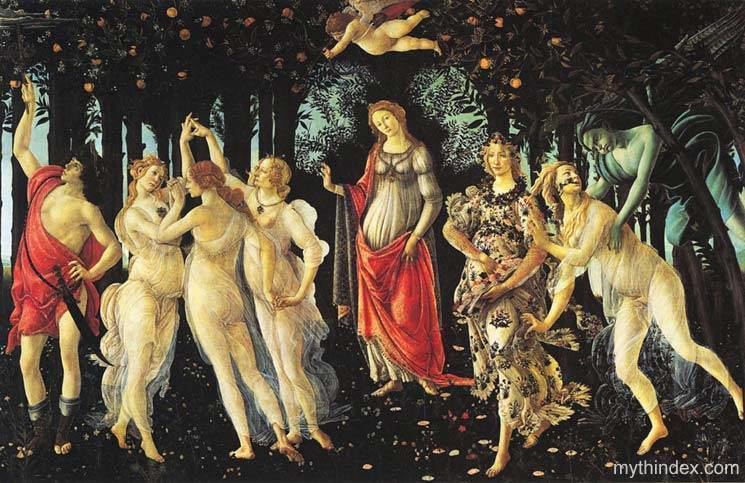 | ||
In Greek mythology, a Charis (/ˈkeɪrɪs/; Greek: Χάρις, [kʰáris]) or Grace is one of three or more minor goddesses of charm, beauty, nature, human creativity, and fertility, together known as the Charites /ˈkærᵻtiːz/ (Χάριτες [kʰáritɛːs]) or Graces. The usual list, from youngest to oldest is Aglaea ("Splendor"), Euphrosyne ("Mirth"), and Thalia ("Good Cheer"). In Roman mythology they were known as the Gratiae, the "Graces". In some variants, Charis was one of the Graces and was not the singular form of their name.
Contents
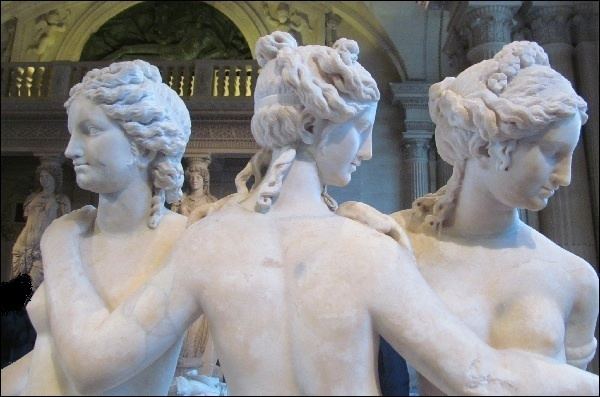
The Charites were usually considered the daughters of Zeus and Eurynome, though they were also said to be daughters of Dionysus and Aphrodite or of Helios and the Naiad Aegle. Other possible names of their mother by Zeus are Eurydome, Eurymedousa, and Euanthe. Homer wrote that they were part of the retinue of Aphrodite. The Charites were also associated with the Greek underworld and the Eleusinian Mysteries.
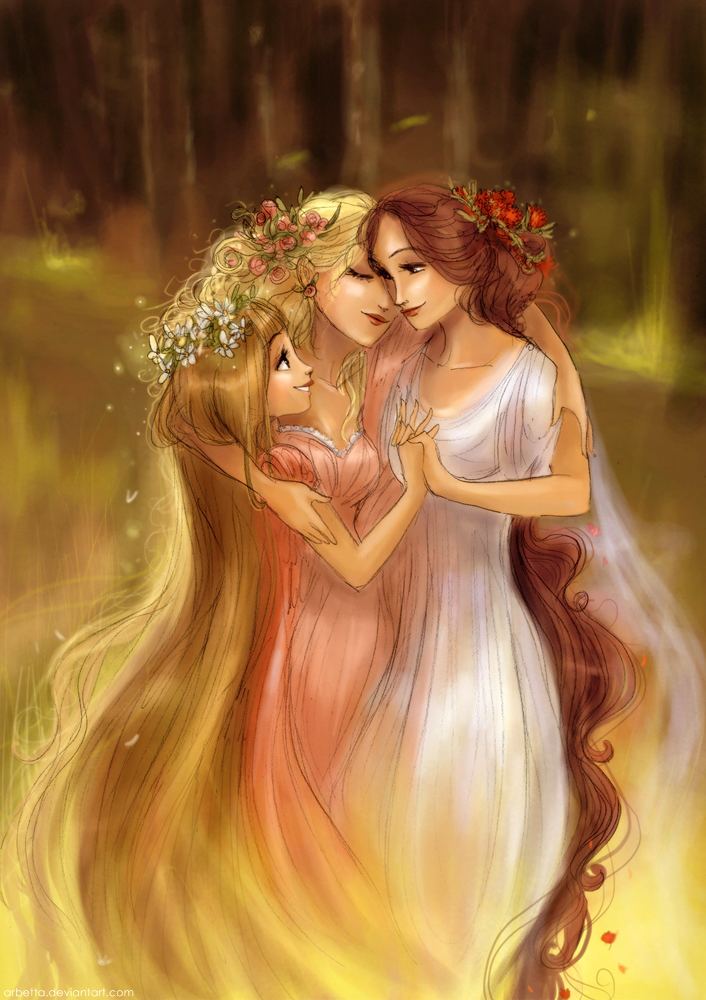
The river Cephissus near Delphi was sacred to them.
Regional differences
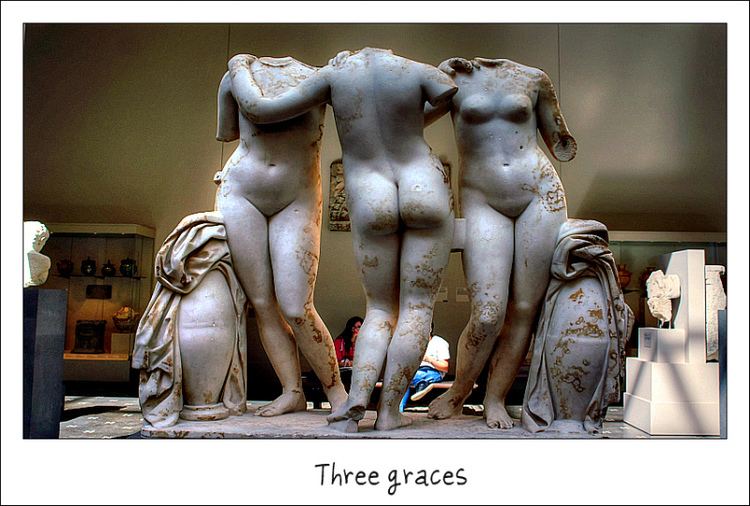
Although the Graces usually numbered three, according to the Spartans, Cleta, not Thalia, was the third, and other Graces are sometimes mentioned, including Auxo, Hegemone, Peitho, Phaenna, Pasithea and Charis or Cale. An ancient vase painting attests the following names as five: Antheia ("Blossoms"), Eudaimonia ("Happiness"), Paidia ("Play"), Pandaisia ("Banquet"), Pannychis ("Night Festivities") - all referring to the Charites as patronesses of amusement and festivities.
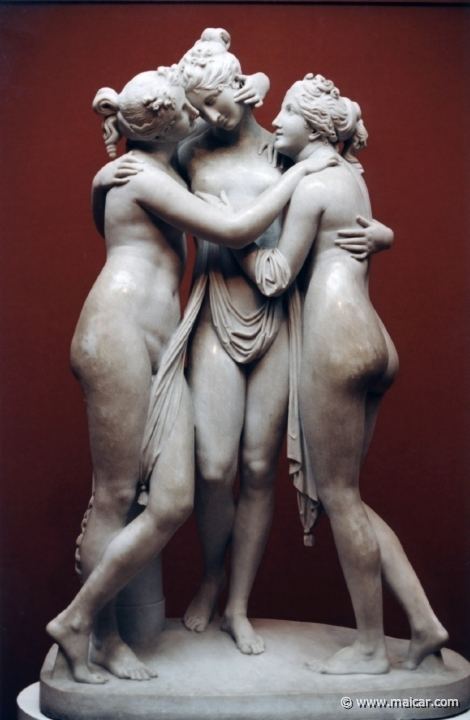
Pausanias interrupts his Description of Greece (book 9.xxxv.1–7) to expand upon the various conceptions of the Graces that had developed in different parts of mainland Greece and Ionia:
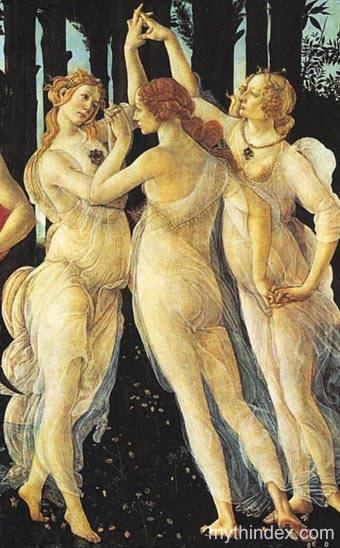
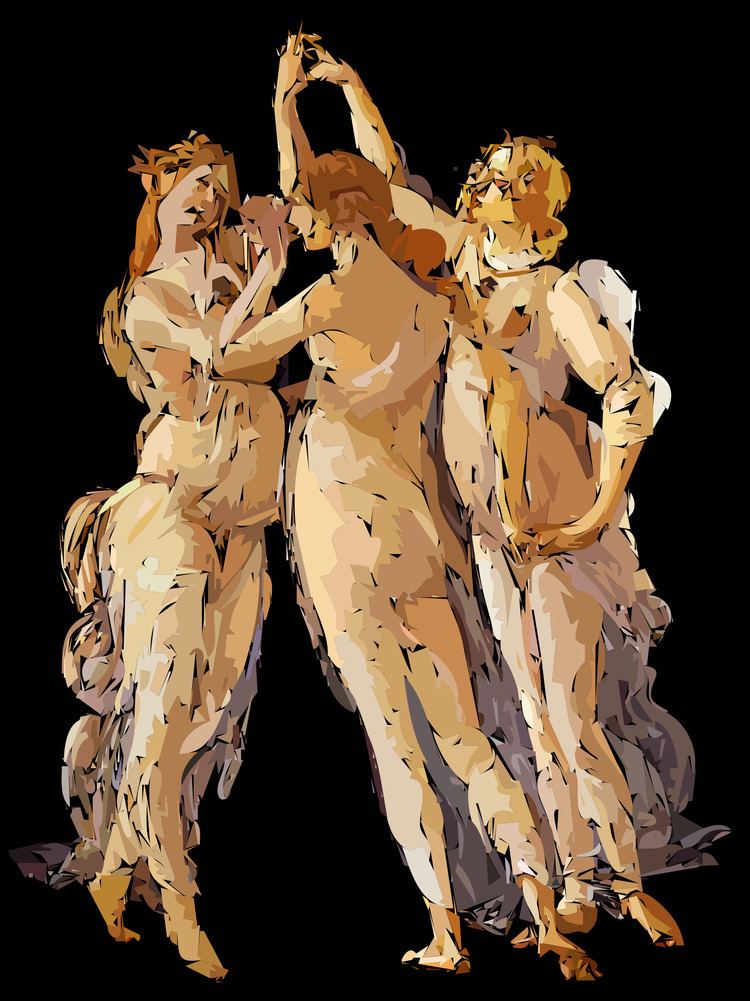
In art
On the representation of the Graces, Pausanias wrote,
"Who it was who first represented the Graces naked, whether in sculpture or in painting, I could not discover. During the earlier period, certainly, sculptors and painters alike represented them draped. At Smyrna, for instance, in the sanctuary of the Nemeses, above the images have been dedicated Graces of gold, the work of Bupalus; and in the Music Hall in the same city there is a portrait of a Grace, painted by Apelles. At Pergamus likewise, in the chamber of Attalus, are other images of Graces made by Bupalus; and near what is called the Pythium there is a portrait of Graces, painted by Pythagoras the Parian. Socrates too, son of Sophroniscus, made images of Graces for the Athenians, which are before the entrance to the Acropolis. Also, Socrates was known to have destroyed his own work as he progressed deeper into his life of philosophy and search of the conscious due to his iconoclastic attitude towards art and the like. All these are alike draped; but later artists, I do not know the reason, have changed the way of portraying them. Certainly to-day sculptors and painters represent Graces naked."During the Renaissance, the Roman statue group of The Three Graces in the Piccolomini library in Duomo di Siena inspired most themes.
The Charites are depicted together with several other mythological figures in Sandro Botticelli's painting Primavera. Raphael also pictured them in a painting now housed in Chantilly in France. Among other artistic depictions, they are the subject of famous sculptures by Antonio Canova and Bertel Thorvaldsen.
A group of three trees in the Calaveras Big Trees State Park are named "The Three Graces" after the Charites.
